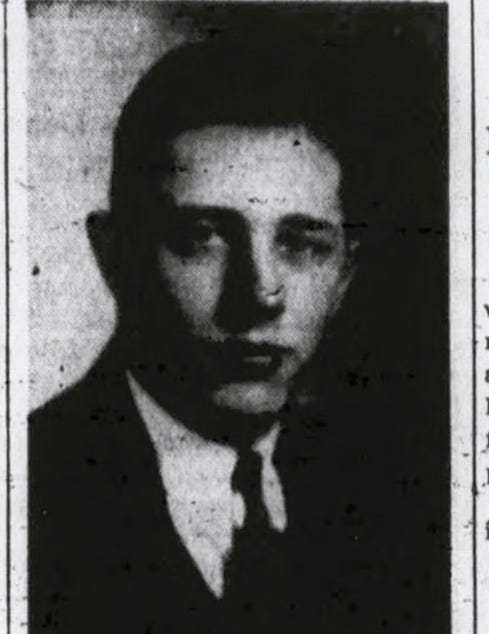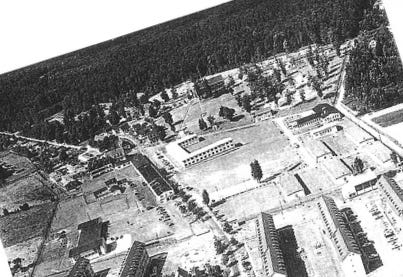My latest cold war story. The whole thing is at Medium, here. I fear this story might be too long and too disconnected to all but CIA mooks. But I had to write it as it jazzed outta me. I'm a victim of my muse.
- You begin by drawing circles around names. You draw lines connecting these circles. You make the lines into arrows. In this way, you build up a profile, a diagram, a secret history. Everyone is interested in a secret history. Secret, put it in the subtitle, market the fuck out of it. That history is like the aether in physics, it fills up the space of history, it mediates between events, mysteries, cases, disappearances, suicides, cries in the asylums, the low watt shadows in solitary. You sit in Langley, to which you have moved from the old hq in D.C., and you are James Angleton, piecing together the great conspiracies over time and place, putting your finger on Nosenko, the false defector, the one you have always expected. Or you are Mark Lane, in a London Hotel, feeling the heat coming in from Swingin’ London, becoming a celebrity yourself just like Paul McCarthy, who had actually called you up on the phone, half satisfied/half afraid that you were finally sticking it to the man on a big scale, leafing through eyewitness testimonies and notes gathered from the Citizens Committee of Inquiry. You are overlaying discrepancy on discrepancy, feeling that the Warren Commission’s tropism towards a predetermined conclusion is itself a clue. “I’m just a patsy,” Oswald tells the reporters. A slogan for our time. The conspiracy theorists out in the street, among the hippies, paranoids in the Movement and beyond, were in a parallel universe to those others in offices at 2430 E Street Northwest, the great Manichean fifties, where everything was an association, an informants tip, a hint at the greater picture of Communist conspiracy. The officers looking at the “brainwashing” of American troops in Korea, or Cardinal Mindszenty in Budapest. The ones collecting files from Wehrmacht Intelligence, 1941–1945. Hiring experts in interrogation, behavioural control. The ones who did the experiments at Dachau. The ones who developed toxins at Auschwitz. The scientists from Unit 731 in Manchuria. Bring them to America, set up labs, tap their knowledge. It was war.
- Everything after World War II was a war. The war on cancer. The war on poverty. The war on communism. The war of circles and connecting arrows.
- “On the subject of being noticed, there is an inverse point that should be noted. At times tricksters have reason to credit, or accuse, some imaginary person with what has been done. A natural mistake is to describe someone of a form, and of actions, which are unusual and striking. It usually is easy to ascertain that no such person has been in the vicinity. The proper description will be of a person average in size and coloring and normal in features, but — and this is a very essential point-having some minor oddity such as the first joint missing of the little finger of the left hand, or a large mole close behind his right ear.”
Goodbye Mr. Thornhill, whoever you are.” — North by Northwest.
2.

- “It wasn’t felt necessary really to go into a lot of detail as to exactly how they were handling the subjects. In general, patients would be of low interest.”
- The man I am after: M.A. and his “derogatory associations”. The face, the voice, the experience, the traveller and desk hound under so many redacted documents. I go into the documents I can find, the ones online, the ones released. I go into the books, in which the stories grow stale, the referent tugs free from the reference, haunts the dreams of the abused. His hasty entrances and puzzling exits, his presence at the fringe of recovered memory. I go to the State Department directory for 1945 to get my bearings.
- M.A. — “b. Washington, D.C., Mar. 6, 1910; Central High Sch. Grad.: Devitt Prep Sch. Grad.: George Washington U., 1927–1940; with U.S. Govt., 1929–1938; investigator, Civil Ser. Commn., 1938–43; U.S. Navy, 1943–46, lt., overseas service; app. Asst. security officer, CAF-12, in the Dept. of State Mar. 12, 1946; married. — CON.” Slots light up on the board. This guy.
- He emerges into the light in small ways, in out of the way places, but his life, his profile, is sketchy at best. GWU — 1927–1940? Really? How is he with the U.S. Govt. all of this time as well? I have the GWU yearbooks, 1934–1938. I search, I find his picture in the Hatchet. Did he know Bob Bannerman, also at GWU in those years? Bob, his boss at State, his boss at the CIA. Bob, though, wasn’t a presence. He was never chaplain of his frat. He doesn’t seem to have had a frat. Went to night classes there.
- The photographs that exist in the old D.C. papers — they are of the “juvenile dancer”, the prodigy from the Hoffman and Hoskins Dancing school. Specialty: the cymbal dance. Dressed up as a young Russian — or Cossack.
- D.C. is a small town. Among those donating money to the Hoffman and Hoskins Dancing school: Mrs. Allen Macy Dulles, mother of Allen Dulles. M.A. enters into the Dulles circle early.
3.
- What did the Agency psychologists make of the childhood? A dancer, this kid. And the sexual connotations thereof. Not your refined Ivy League type, not your beefy FBI type, but of a kind generally unmentioned in the literature — the D.C. type, the GWU type, the type whose father or uncle or mother is in government service. It is as natural to a D.C. kid as coal mining is to a kid in Marshall County West Virginia. But behold, such zigzag routes!
- His dad, Emmet his Mom Una calls him, his dad gets his law degree in Iowa, where he no doubt met Una. He does some post-grad work in Michigan. He gets the call to go to Washington D.C., where he gets a position at Treasury. Or is it Labor? The couple get a house, Emmet calls it their “villa”, out on the Northeast edge of the District. Where the streetcar tracks, newly laid down, promise to solve the problem of getting downtown. Una has her Daughters of the American Revolution projects, her church projects. Emmet makes small investments on the side.
- In 1952, M.A. has moved from the sketchy Project Bluebird (was it all about torturing informers, double agents, communists for what info load they could lay down?) to Project Artichoke. What was Artichoke? Department heads were asking. Some wanted a piece of the pie, some were disturbed by what they heard from their people in the field. A Doctor, no less, was sent in by Technical Services — Ray Treichler’s domain — to assess Artichoke. The assessment that came back was scathing. “[redacted], the present team chief, is an investigator of twenty years experience with Civil Service. He has been thoroughly trained in the use and limitation of the polygraph, received four days of instruction from a professional non-M.D. hypnotist in New York City, and has read extensively in the overt material on hypnosis. He has had no scientific background other than that that dealt directly with his work in criminology. He has had extensive contact with the communists in this country and knows their methods. It is not known whether he has a college degree.
“He is not an unusually intelligent man but has a vivid imagination that would be most valuable in the pursuit of this project. He has on several occasions created antagonism in his co-workers because of tactless management. He tends to be cautious and cons3ervative. His long government service has soundly grounded him in the ramifications of intra-Agency politics.” I read this assessment with a pang for M.A. “It is not known whether he has a college degree.” The old farts, retired, often complained of the kind of Ivy League snobbery they bore the brunt of. An image of the multi-lingual, dashing espionage agent, for public consumption. M.A. is not even dashing — cautious and conservative. A Joe Friday. A Dragnet cop.

“He has apparently become a rather able hypnotist, but is hampered in his efforts by his lack of confidence which it is felt stems from his scientific void.”
“It is suggested that the Medical Office with the support of I&SO recommend [sic] that a high-level control of the project be set-up, to consist of civilians with no service affiliation, who are scientifically well-qualified, and who would be full time, to coordinate, evaluate and direct the ARTICHOKE PROJECT.”
- His star routine as an Indian dancer, performed in the Hoffman-Hoskins Kiddies Revue in Washington D.C. at the age of 13. Performed in New York City, where he won a prize for his age class. At that time, Gertrude Hoffmann herself called him “one of the most clever juvenile dancers in America.” But our childhood is an elaborate cut-out, no? It passes, interest wanes, a few pictures (b & w) are put in the album, which falls from the hands of M.A.’s mother, Una, sitting in her cane chair on 131 R street in 1934, dying. “I don’t feel well, Emmet”, she says. But Emmet is always out. He’s got his fingers, or his clumsy hands, in pies. Developing land in the suburbs. Retired from the stats department under Hoover. Her boy at the time was dating that girl named Dotty, whose family seemed nice — but could they trace their heritage back to one of Iowa’s premier pioneers? Back to the Revolution? A DAR girl. Marry a DAR girl, Emmet would say to their son, at the dinner table, big jovial wink. Una dies, and M.A. marries, a year later, in Baltimore.
- Dot: her childhood house on T. Street. Did she meet M.A. when he was fourteen, struggling with pimples and sexual urges, at the streetcar stop, the Eckington Station. Getting off at 13th street, still a little afraid entering the world of Central High. Or was it later?



No comments:
Post a Comment